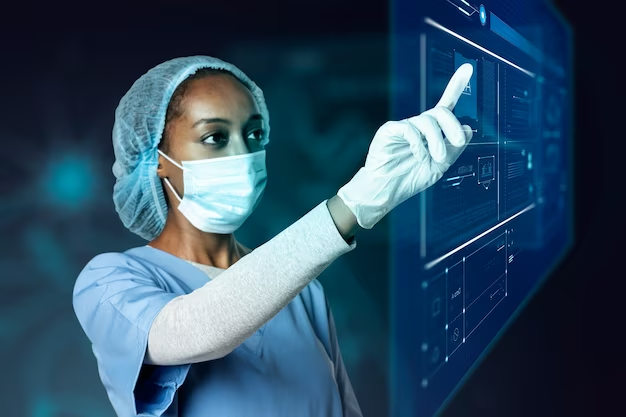(Varicose veins(1st part / الدوالي (الجزء الأول) (بالانجليزية والعربية)
Varicose veins can be caused by a variety of factors including primary, secondary, or congenital causes. Primary varicose veins form due to an intrinsic weakening in the vein's wall. Varicose veins can be hereditary and frequently appear in multiple members of the same family. Secondary causes of varicose veins include trauma and deep vein thrombosis. Congenital varicose veins are caused by abnormalities in the natural development of the venous system and are typically associated with a vascular abnormality in the limb at birth.
The clinical presentation of varicose veins varies, and some patients may be asymptomatic. Localized symptoms may be unilateral or bilateral including bulging, bluish veins, pain, burning, itching, tingling at the site of the varicose veins, as well as spider veins, which are tiny veins that resemble spider web. Generalized symptoms consist of aching, heaviness, cramping, throbbing, restlessness, and swelling in the legs. Symptoms are often worse at the end of the day, especially after prolonged standing, and usually resolve when patients sit and elevate their legs. Signs of a more serious underlying vascular insufficiency may include changes in skin pigmentation, eczema, infection, superficial thrombophlebitis, venous ulceration, loss of subcutaneous tissue, and lipodermatosclerosis (a decrease in lower leg circumference due to chronic inflammation, fibrosis, and contraction of the skin and subcutaneous tissues). Although rare, hemodynamically significant external haemorrhage resulting from the perforation of a varicose vein has been reported
Weaker valves and veins are more susceptible to clotting and haemorrhaging, necessitating urgent treatment using various methods. The decision to proceed with treatment and the therapeutic options are determined by symptoms and patient preferences. The risk of complications, the existence or absence of profound venous insufficiency, and the features of the affected veins can all assist guide treatment. The treatment options for varicose veins include the following: phlebotonics which are oral and topical medicines that aim to reduce the symptoms of chronic venous insufficiency by increasing venous tone, improving capillary hyperpermeability, and decreasing blood viscosity. Compression has traditionally been advised as the initial treatment for varicose veins. However, there is little information to evaluate whether compression stockings are beneficial in the treatment of varicose veins in the absence of active or healed venous ulcers. Varicose veins also can be treated with interventional techniques such as thermal ablation, endovenous sclerotherapy, or surgery. Although surgery was formerly the basis of therapy, it has been largely replaced by endovenous thermal ablation, which can be performed under local anaesthesia and may produce better results with fewer difficulties than other treatments. Blockage of the pelvic veins may exacerbate the symptoms of varicose veins, necessitating separate treatment.
...................For more: Read second part
الدوالي
الدوالي هي واحدة من المشاكل الوريدية الأكثر شيوعا في جميع أنحاء العالم. يمكن أن تؤثر على كل من الرجال والنساء من مختلف الأعمار. ويتم تعريف الدوالي على أنها أوردة سطحية منتفخة ومتوسعة ومتضخمة يمكن الشعور بها تحت الجلد، وغالبًا ما يبلغ قطرها أكثر من 3 مم. توجد عادة في الجزء الداخلي من الساق أو الفخذ وتتطور نتيجة لضعف جدار الوريد وخلل في الصمامات. حيث تحتوي الأوردة على صمامات ذات اتجاه واحد تفتح وتغلق للسماح للدم بالعودة إلى القلب. وإذا أصبحت الصمامات ضعيفة أو تالفة، يمكن أن يعود الدم ويتجمع في الساق، مما يسبب زيادة الضغط في الوريد ويؤدي إلى توسع وتمدد الأوردة أو التوائها مما يسبب الدوالي.
يمكن أن يكون سبب الدوالي مجموعة متنوعة من العوامل بما في ذلك الأسباب الأولية والثانوية، أو الخلقية. حيث تتشكل الدوالي الأولية نتيجة لضعف جوهري في جدار الوريد. يمكن أن تكون الدوالي وراثية وتظهر بشكل متكرر لدى عدة أفراد من نفس العائلة. الأسباب الثانوية للدوالي تشمل الاصابة وتجلط الأوردة العميقة. تنجم الدوالي الخلقية عن خلل في التطور الطبيعي للجهاز الوريدي وترتبط عادةً بخلل في الأوعية الدموية في الأطراف عند الولادة.
تكون الصمامات والأوردة الضعيفة أكثر عرضة للتجلط والنزيف، مما يستلزم العلاج العاجل باستخدام طرق مختلفة. يتم تحديد قرار مواصلة العلاج والخيارات العلاجية حسب الأعراض وتفضيلات المريض. كما أن خطر حدوث مضاعفات، ووجود أو عدم وجود قصور وريدي عميق، وملامح الأوردة المصابة يمكن أن تساعد في توجيه العلاج. تشمل خيارات علاج الدوالي ما يلي: أدوية فموية وموضعية تهدف إلى تقليل أعراض القصور الوريدي المزمن عن طريق زيادة التوتر الوريدي، وتحسين فرط نفاذية الشعيرات الدموية، وتقليل لزوجة الدم. كما يُنصح تقليديًا بالجوارب الضاغطة كعلاج أولي للدوالي. ومع ذلك، هناك القليل من المعلومات لتقييم ما إذا كانت الجوارب الضاغطة مفيدة في علاج الدوالي في حالة عدم وجود تقرحات وريدية نشطة أو ملتئمة. يمكن أيضًا علاج الدوالي باستخدام التقنيات التداخلية مثل الاستئصال الحراري أو العلاج بالتصلب الوريدي أو الجراحة. على الرغم من أن الجراحة كانت في السابق أساس العلاج، فقد تم استبدالها إلى حد كبير بالاستئصال الحراري داخل الوريد، والذي يمكن إجراؤه تحت التخدير الموضعي وقد يؤدي إلى نتائج أفضل مع صعوبات أقل من العلاجات الأخرى. قد يؤدي انسداد أوردة الحوض إلى تفاقم أعراض الدوالي، مما يستلزم علاجًا منفصلاً.
للمزيد: اقرأ الجزء الثاني.................
References
Habiba, A.I.A. (2008). The effect of hydrotherapy versus massage on lower limbs varicose veins
discomfort. Retrieved
from http://www.eulc.edu.eg/eulc_v5/Libraries/Thesis/BrowseThesisPages.aspx?
fn=ThesisPicBody&BibID=11419636&TotalNoOfRecord=94&PageNo=11&PageDirection=Next
National Heart, Lung, and Blood Institute. (2023). Varicose veins. Retrieved from
https://www.nhlbi.nih.gov/health/varicose-veins
Patient Education Series. (2015). Varicose veins. Nursing, 45(6),50. DOI:
10.1097/01.NURSE.0000464984.92562.3c
Raetz, J., Wilson, M., & Collins, K. (2019). Varicose veins: diagnosis and treatment. American Family
Physician, 99(11).
The Vascular Disease Foundation.(2012). Varicose veins. Retrieved
from https://vasculardisease.org/flyers/varicose-veins-flyer.pdf
VCU Health. (2019). Varicose veins. Retrieved from
https://www.vcuhealth.org/-/media/media/file/radiology_varicoseveinspatientinfo_march2019_webacc
ess.ashx






Comments
Post a Comment